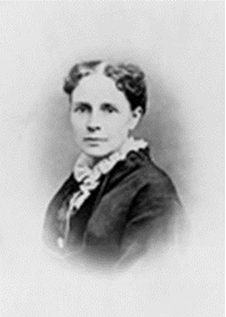Last updated: May 27, 2021
Article
Malaria: The Evil Spirit of the White House

It came on quietly…stealthily…
The week before, First Lady Lucretia Garfield managed and attended several social obligations: dinners, teas, receptions, overnight guests, and the dedication of the Admiral David Farragut statue. She also held her regularly scheduled Tuesday and Friday public gatherings at the Executive Mansion. Her husband even assisted: “April 1881 – Tuesday, 26. Helped Crete at her reception in evening.” Spring was “bursting into sudden bloom, with heat quite enervating,” according to the 20th president.
By May, it was ominous…
“May 1881 – Tuesday, May 3. In the evening, helped Crete in receiving her friends in the red parlor. Poor Crete, she is not well—malaria, almost a chill this morning.” Murat Halstead, a newspaper editor, called on the first family and found Mrs. Garfield huddled by “a rather unseasonable wood fire.”
“Wednesday, 4. Crete has been ill all day with something like chill fever. She has been too hard worked during the past two months.”“Thursday, 5. Crete has been in bed all day with a bad fever.”
By Saturday, May 7, President Garfield had arranged for his wife’s doctor, Miss Susan Edson, to stay with her as a nurse and kept the room very quiet in hopes of a speedy recovery. A couple days later when the first lady was suffering a great deal of pain, the president “wanted the judgement of a fresh mind on her situation” and sent for Dr. Jedidiah H. Baxter, whose duties included serving as personal physician to the President of the United States and attending to his family. He agreed that it was the result of malaria and overwork but feared there may be danger of cerebrospinal meningitis. Dr. Pope was summoned later that evening and agreed with Miss Edson’s diagnosis: malaria and nervous exhaustion. Crete had a very hard night and was removed to a room on the north side of the house, further away from the Potomac River.
The president was consumed with worry…
On May 11, 1881, Washington newspapers began commenting on the illness of the first lady. The front gates of the White House were closed to visitors. No carriages were allowed to approach to keep the area quiet. A reporter for the Washington Star wrote that, “It is now believed that Mrs. Garfield’s illness was wholly due to the effects of sitting so long in the hot sun the day the Farragut statue was unveiled.”
The first lady’s malaria was followed across the country in headlines and editorials, always with a focus on President Garfield and his anguish. “My anxiety for her dominates all my thoughts and makes me feel that I am fit for nothing.” He told his friend Henry Knox, “If I thought her return to perfect health could be insured by my resigning the presidency, I would not hesitate a moment about doing it.”
The intensity of Lucretia’s disease may have been exacerbated by the ague she suffered as a young girl. Like many others living near water sources in the Western Reserve of Ohio (including James Garfield), she had bouts of fevers, chills, and flu-like symptoms annually, resulting in chronic lung problems every winter throughout her life.
The president’s cousin, Dr. Silas Boynton – a homeopath – finally arrived in mid-May to take over her care. He administered heroic doses of potent medicines in order to alleviate her high fever. “Her temperature is up to 104, and the pulse at 100. This will burn her out if not arrested…” wrote the president in his diary. She was given fever powders along with ice and alcohol baths. On Saturday, May 14, the fever dropped to 101 degrees and fell further on Sunday. The next day, she relapsed into weakness and fatigue – but the fever did not rise.
This made the management of her case very difficult for the remedies that alleviated the fever seemed to aggravate the exhaustion. Crete’s improvement was very, very slow but Dr. Boynton felt that it was moving in the right direction. Fortunately, cooler weather seemed to help in her recovery. Lucretia’s strength was increasing, and she asked to be lifted from bed into a lounge chair on May 28.
Part 2 of this article can be found here
